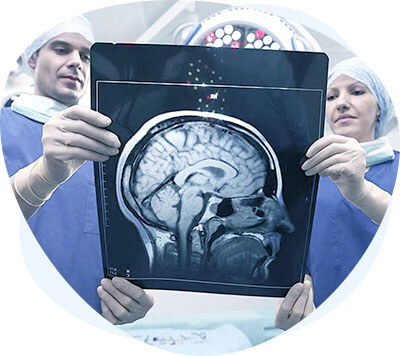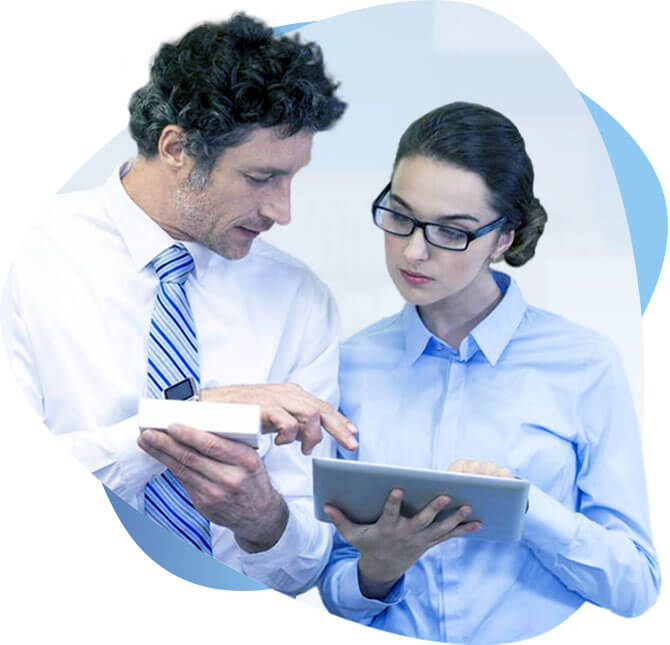Narcolepsy - why a person falls asleep on the go, symptoms, diagnosis and treatment
Narcolepsy is a disease that Russian medicine knows quite a bit about, unlike European. Often in our country, people suffering from this disease are given a different diagnosis - most often temporal lobe epilepsy. The external manifestations of these two diseases are much similar, but their origin and causes are completely different; therefore, treatment methods should be different.
What is narcolepsy in general?
Neurologists have not identified the exact mechanism of the formation of the disease. Some doctors believe that sleep problems are caused by a variety of mental disorders. Other doctors adhere to the theory of insufficiency of neurotransmitters who are responsible for wakefulness. Narcolepsy can cause deficiency of a special substance - hypocretin. This substance is a neurotransmitter that regulates a person’s sleep. Its deficiency is the main cause of sleep paralysis.
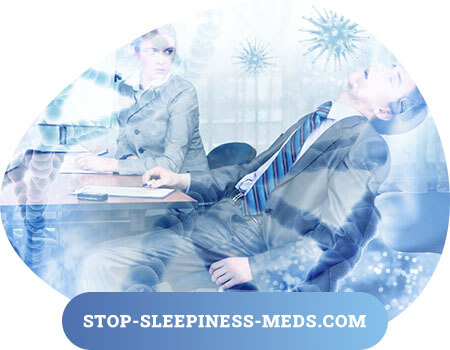
There is another theory that pathology is associated with autoimmune processes and an increase in atypical T-lymphocytes. Various infections and vaccinations can cause the disease. Manifestations of carotid paralysis occur suddenly, which allows us to conclude that the REM phase is disturbed. The basics of clinical manifestations are included in the international classification of diseases. The code for the ICD pathology is C 47 - G 47.4.
Diagnostics
Of course, in the diagnosis of narcolepsy a paramount role belongs to the patient's complaints and the medical history. However, this is not enough. For reliable confirmation of the diagnosis, additional research methods are necessary: polysomnography and the test of multiple sleep latencies.
Polysomnography implements video recording of sleep while recording the physiological parameters of the body: electrocardiograms, electroencephalograms, muscle contractions, respiratory movements and a number of other indicators. Usually in the laboratory you need to spend the whole night. According to the results of the study, the data is processed using a computer. This study aims to: rule out other causes of sleep disturbance. The day after polysomnography, a test of multiple sleep latencies is performed.
The test of multiple sleep latencies is as follows: the patient is given 4-5 attempts to fall asleep during the day. 20 minutes are allotted for one attempt. The intervals between attempts are 2 hours. At this time, a number of body parameters are also recorded, and sleep phases (fast and slow) are recorded. With narcolepsy, the REM sleep phase occurs very quickly, and changes in the structure of sleep that differ from normal occur. The presence of such changes in the absence of other signs of sleep disturbance during polysomnography confirms the diagnosis of narcolepsy.
Causes of Narcolepsy
Studies little explain the mechanism of development of narcolepsy, the causes of pathology lie in the identification of genes that are closely associated with sleep disorders. Genes provide the necessary control over the formation of a certain signal of falling asleep and awakening in the human brain. The disease also causes a lack of hypocretin in the body.
The causes of the anomaly may be brain damage, which has a direct effect on the regulation of the phases of rest. This fact can never be ruled out, so the patient should undergo a thorough examination during the development of the disease. Brain anomaly is sometimes the main negative factor in the appearance of symptoms of the disease. When combined with gene disorders, various sleep disorders occur.
Doctors believe that the development of narcolepsy is associated with malfunctions of the immune system. This negative factor contributes to fatigue and drowsiness. But the main causes of narcolepsy are the lack of necessary neurotransmitters.
A lack of hypocretin neurons often occurs with:
- bearing a fetus;
- cranial trauma;
- infection or inflammation;
- overwork;
- emotional instability;
- stress
- imbalance of thyroid hormones;
- diabetes mellitus;
- impaired functions of the immune system.
All of the above conditions can provoke a sleep disorder. Very often, the main factor in the appearance of the disease remains undetected.
The main symptoms of narcolepsy
Daytime falling asleep is the most common symptom in pathology. Suddenly, a person begins to fall into a dream so strongly that neither washing nor active movements help. Falling asleep can occur anywhere and during any activity. A person can fall asleep:
- at work;
- during the educational process;
- in transport;
- driving a car;
- when reading a book;
- when watching TV;
- with monotonous work.
If a person is at home, then sleep has a long duration. At work, sleep can last 5-10 minutes. After waking up, the interrupted activity continues, and the person feels vigorous enough for further work.
Symptoms of pathology also include cataplexy attacks. The term refers to the sudden disappearance of muscle tone and strength, weakness is especially felt in the transverse muscles. The symptom is generalized or covers all muscle groups. The last manifestation is characterized by immobility and falling. If the symptom develops only in individual muscles, then motor activity is lost selectively. The following phenomena can be observed:
- drooping head;
- limb mowing;
- falling out of hands.
With cataplexy, consciousness is not disturbed. A person realizes that he is falling or is not able to perform a certain action.
The attack does not last long, but its repeated repetition is possible. The condition develops spontaneously or some emotions cause it. There have been cases when cataplexy occurred with a loud hysterical laugh or during sex.
Perhaps the cause of this is narcolepsy?
In the pathological process, reflexes of tendons and muscles are blocked, sweat is intensified, the heart begins to work slowly, pallor of the skin occurs. When the head hangs, breathing is difficult.
Cataplexy accompanies the moments of awakening and falling asleep of the patient. A similar pathology is called carotid paralysis. A person at the time of an attack cannot move his body and limbs, make a speech. Sleep paralysis is usually associated with nighttime sleep. Cataplexy often precedes the occurrence of daytime falling asleep.
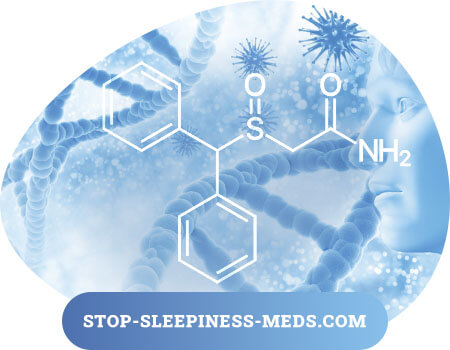
When diagnosing drug-related baldness, hallucinations may become symptoms. The symptom is observed in a third of patients. There are hallucinations of various types:
- visual;
- auditory;
- flavoring;
- tactile;
- olfactory.
During falling asleep, various hypnagogic images arise. After awakening, hypnopompic hallucinations are observed. Symptom is usually inherent in night rest. With daytime attacks, it rarely appears. Hallucinations develop the appearance of fears, because often they are frightening in nature. A man is afraid to fall asleep, to be alone in a dark room.
The symptoms of narcolepsy also include fear of falling asleep and frequent waking up in the middle of the night. After the night's sleep is disturbed, a person can no longer fall asleep. The patient also cannot fall asleep during the day. Violations of the rest mode adversely affect overall health. Dizziness, headaches develop, memory worsens, concentration of attention decreases.
The effects of excess drowsiness
Narcolepsy reduces the quality of life, leading to various disorders, and affects the following areas:
- Physical security. The disease can manifest itself in any situation, for example, when in places requiring increased concentration of attention: in a mountain hike, when crossing the roadway.
- Mental health The patient becomes anxious, suspicious, constantly afraid to fall asleep. Negative emotions negatively affect the nervous system.
- Physiological condition. Constant lack of sleep leads to chronic fatigue syndrome, which is accompanied by a violation of a number of body functions.
- Social relations. Narcolepsy often interferes with career development, as people around are not always ready to understand that a person is suffering from a disease, and not just lazy.
These consequences are eliminated if observed by a specialist, follow his instructions and treat Zhelino's disease with available methods.
Treatment
Polysomnography is the first thing to do
Before starting treatment, a diagnosis is performed. Polysomnography will help to find out the causes of sleep disorders, a study is also being conducted to identify respiratory disorders. Next, the necessary drugs are selected, drugs that are most effective in eliminating symptoms. Therapy will help to actively combat night sleep disturbance and daytime sleep. To quickly get rid of the symptoms, how to treat the disease and what to do, you need to find out from the doctor. Doctors consider the disease a narcoleptic disease and use various drug regimens to eliminate it.
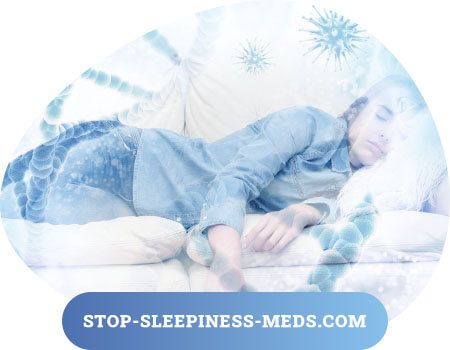
The pathology of sleep has a peculiar clinical picture. The treatment of narcolepsy depends on the manifestations. In pathology, the effect of sleeping pills is not effective enough. With daytime sleepiness, it is recommended:
- Meridil
- Indopan;
- Modafinil;
- Sydnocarb.
The dosage of psychostimulants is prescribed individually. A treatment course of 2-3 weeks is required. After a short period of time, the therapy is repeated.
The use of tricyclic antidepressants helps to eliminate the manifestations of cataplexy. Prescribe drugs clomipramine and imipramine. It is advisable to use a serotonin reuptake inhibitor in therapy - for this purpose, Fluoxetine is prescribed. Various amphetamine-based stimulants are also used to normalize sleep.
It is known that today the development of new drugs in the form of nasal sprays is actively underway to help the patient quickly fill in the lack of neurotransmitters in the body.
Articles
General information
Narcolepsy is a fairly rare disease. The prevalence is 20–40 cases per 100,000 population. It is believed that this disease affects both the female and male gender. However, according to some reports, men still get sick more often.
The essence of the disease lies in episodic attacks of daytime falling asleep, which may be accompanied by loss of muscle tone of the whole body or individual muscle groups, hallucinations, disturbance of night sleep. Attacks of sleep during the day, we can say, take a person by surprise. Suddenly there is an irresistible desire to fall asleep, which is impossible to overcome. A person falls asleep in an uncomfortable position, anywhere. Having slept for some time (which can be completely different: from several minutes to several hours), a person wakes up independently and feels rested. However, after some time, the attack is repeated again. This situation can be reproduced several times a day, which, of course, significantly disrupts the vital activity.
What causes such a strange and untimely onset of sleep? Let's find out.
General recommendations
With narcolepsy, treatment is supportive and lifelong. It is important for the patient to review certain moments of life, eliminate stress from life or adapt to adverse moments in his life. It is necessary:
- exclude alcohol intake;
- stop smoking;
- avoid eating fatty foods;
- to live an active lifestyle.
Patients need to go to bed at the same time. You can’t watch or read films and books at night that cause a surge of emotions or fear. Going to bed should take place in a calm and quiet environment. You should not turn on the bright light, listen to loud and exciting music. During the day, it is also important to protect yourself from stress and getting negative emotions.
It is recommended to go to bed in the afternoon - it is important to observe a sleep and rest regimen. Daytime sleep should be shorter than nighttime. People suffering from narcolepsy are shown daily daily sleep for 30-40 minutes. After such a short rest, the patient again feels alert and full of strength.
People suffering from pathology are prohibited from driving a car. Such a measure will be able to protect from an accident that can occur when suddenly falling asleep. Avoid working at high altitudes or with machinery.
Forecast and Prevention
The disease has not yet been learned to treat radically, but certain achievements in this direction have been made. People with such a deviation do not need to despair. You should reconsider your lifestyle and adapt to the problem. Narcoleptic pathology does not pose a threat to life, if we exclude situations in which falling asleep is risky. The effectiveness of the drug based on orexin in the form of a nasal spray is currently being investigated. Perhaps soon thanks to the development of narcolepsy and cataplexy will be treatable.
Drug therapy
Modafinil
In many cases, the effective drug Modafinil or its analogues is used. An effective psychostimulant was developed in the last century by an American pharmaceutical company. It is used to eliminate daytime sleepiness and treat narcolepsy. Take the drug in the morning in a standard dose of 100-200 mg. If the episodes of daytime sleep are repeated, the dose is increased. The drug is normally tolerated by the body and helps get rid of the symptoms of narcolepsy.
The mechanism of action of Modafinil is different from Amphetamine. The components of the drug have a direct effect on specific areas of the brain. Under the influence of the drug, the speed of mental reactions increases. The activation of the nerve pathway increases and the effect of the neurotransmitter hypocretin increases. The drug activates the central nervous system and regulates sleep / wakefulness.
Methamphetamine, Methylphenidate
If the patient is difficult to treat with Modafinil, Methamphetamine and Methylphenidate are prescribed. Means can cause some adverse reactions - increased heart rate, hypertension, agitation. Perhaps the body is addictive to the medicine. If adverse reactions develop, you should inform your doctor. It is possible that the doctor will cancel the prescribed drug and replace it with another. The dosage of the medication should also be reviewed. If necessary, and severe adverse reactions reduce it.
Indopan
The drug Indopan is a stimulator of the nervous system. It relieves the manifestations of various psychosomatic diseases, schizophrenia, depression and narcolepsy. The drug eliminates the appearance of hallucinations and sleep disorders. It is prescribed in tablets 2-3 times a day. The dosage is determined individually by the doctor, depending on the clinical manifestations. The therapeutic course of Indopan lasts from 8 to 12 weeks. Drug withdrawal is performed gradually.
Imipramine
The antidepressant imipramine has a high bioavailability and is prescribed to normalize sleep disorders. The active substance of the drug captures neurotransmitter monoamines - serotonin, dopamine, norepinephrine. The adrenergic blocking effect of the drug calms the central nervous system. Among the side effects, dizziness and headaches, cramps, tremor of the extremities can be observed.
With narcolepsy, imipramine is taken according to a certain scheme. Start with 0.75-0.1 g of the drug. Further, the dosage is increased to 0.2-0.25 g per day. After a month, the dose begins to gradually decrease. The medicine is shown below as maintenance therapy.
Sydnocarb
The drug Sydnocarb is prescribed for sleep disorders, lethargy, apathy, asthenic disorders. The drug is widely used in eliminating the symptoms of narcolepsy and depression. The drug includes psychostimulating substances that reduce the capture of catecholamines and affect certain brain structures.
Sydnocarb is prescribed orally before meals. When used once, it is taken in the morning. Reception can also be divided into two - in the morning and in the evening. The maintenance dosage for narcolepsy is 5-10 mg per day. Reception of Sydnocarb begins with a minimum dose of 5 mg. Further, the dosage is gradually increased.
How to diagnose which doctor to contact
The diagnosis must be differentiated from:
- Simple fatigue, due to intense physical or mental work.
- Infectious diseases: influenza, chronic inflammatory foci.
- Meningitis, encephalitis.
- Epilepsy.
- Side effects when taking certain medications.
- Depressive and anxiety disorder, some forms of schizophrenia.
- Asthenic syndrome.
- Tumors of the brain.
- Poor living and sleeping conditions (stuffy bedroom).
- Transient cerebral ischemia.
- Endocrine diseases.
If your relative is suspected to be ill, you should be aware that some drugs may also cause symptoms of narcolepsy.
You need to contact a neurologist. He will carry out all the necessary tests and other diagnostic procedures, why he will finally make a diagnosis and prescribe treatment.
Diagnosis begins with blood and urine tests. If they are normal, they proceed to deeper studies: EEG, MRI of the brain.
Especially informative is the night brain scan during sleep of the patient, carried out in somnological laboratories.




